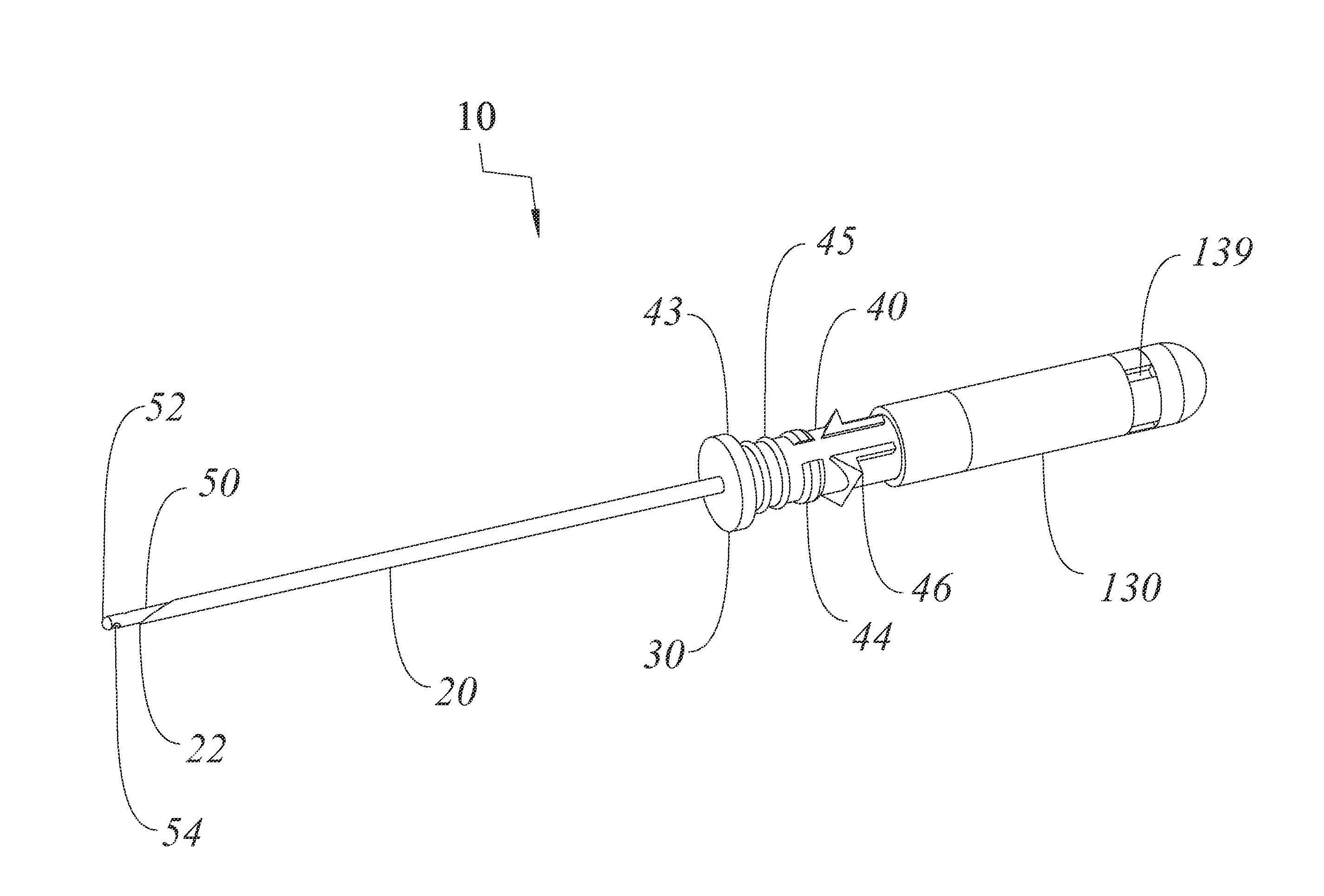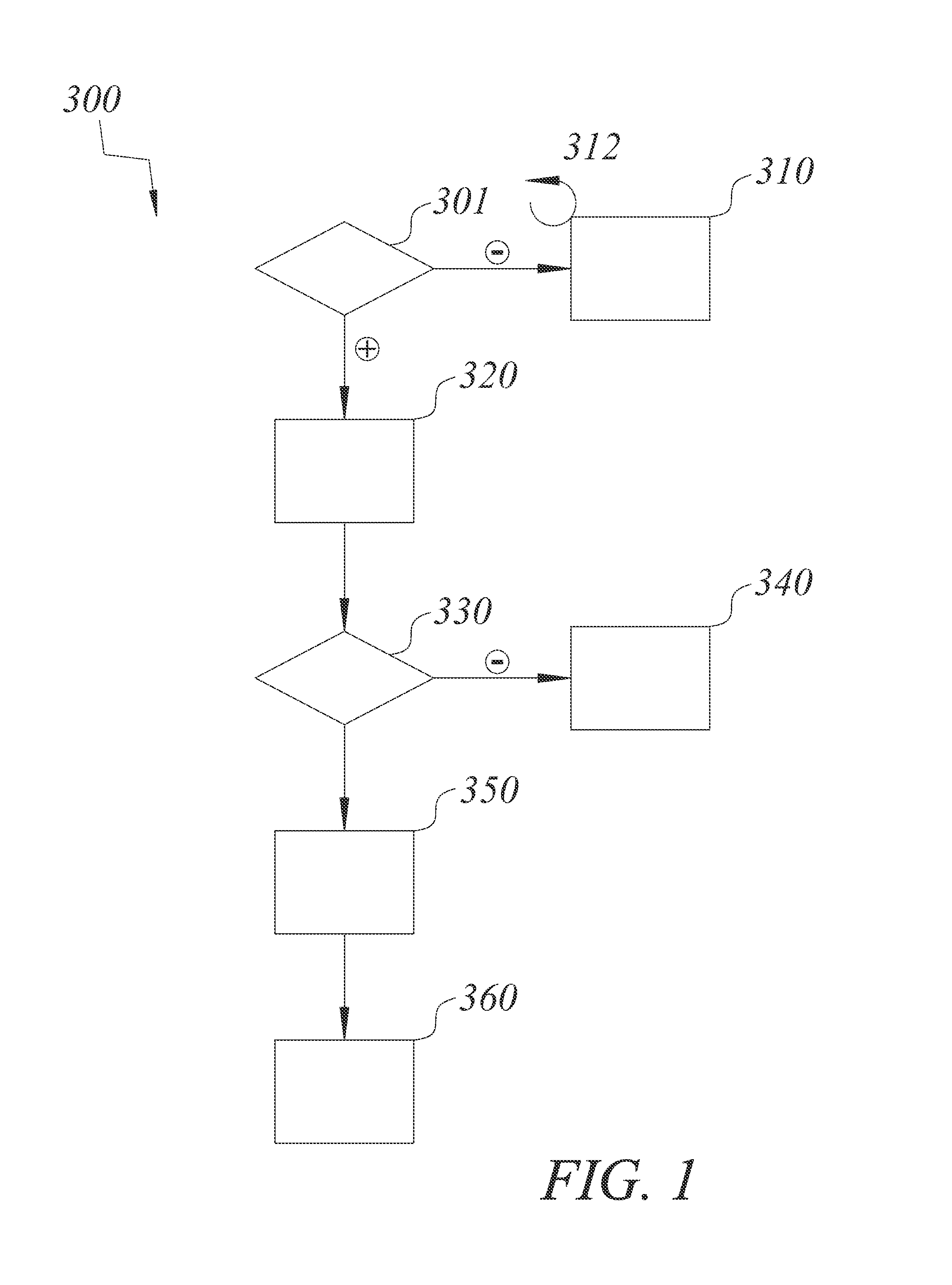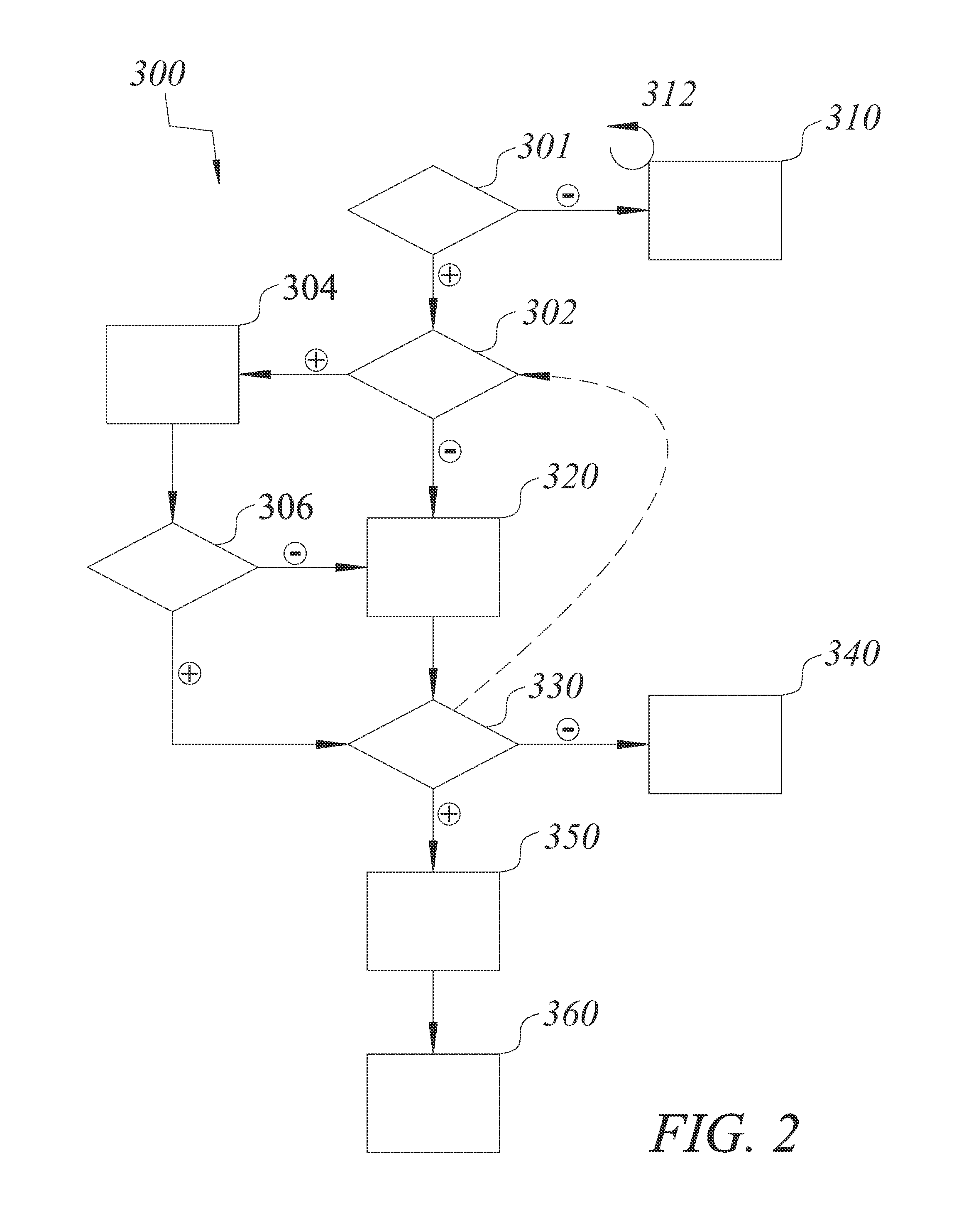In this case, the
lung not only fully collapses, but the air and / or fluid within the pleural space builds up enough pressure in the
chest cavity to cause a significant decrease in the ability of the body's veins to return blood to the heart, which can result in cardiac arrest and death unless treated emergently.
However, correct diagnosis of this condition is far from guaranteed during emergencies.
Presentation of the classic
signs and symptoms are highly variable and, in many cases, the time and / or treatment environment does not permit diagnostic confirmation by chest x-
ray,
ultrasound, or other means.
Thus, current treatments may be withheld due to fear of causing patient harm or, conversely, may be inadvertently performed on a healthy lung and worsen the patient's condition.
Such
treatment results in lung compromise, as an open passage is left in the chest wall producing a non-tension open pneumothorax; possible
iatrogenic injury to the lung or heart, from introduction of the sharp needle tip; the necessity of all patients having subsequent tube thoracostomy (a major procedure), upon presentation to a higher
level of care; and, inability to perform the technique bilaterally, without subsequent continuous
positive pressure ventilation (because both lungs are deflated).
However, these advances all have individual drawbacks, take additional steps and equipment, and are not common in
actual use.
However, this device has no improvements upon the needle device itself.
Although these and similar works are capable of preventing the conversion of an open pneumothorax to a tension pneumothorax, all such devices are incapable of treating a closed tension pneumothorax, as they have no means to penetrate the chest and allow the built up pressure to vent.
Additionally, when used over a standard needle, they have multiple disadvantages including a multi-step process, which at the minimum results in a transient open pneumothorax, as well as the lack of any
documentation means.
However, although this medical pressure-gauge device can diagnose tension pneumothorax, it is not a treatment device as no air (besides that inside the
balloon) is actually released from the body.
Additionally, it has the added
disadvantage of a sharp distal needle end, which may potentially injure the lung.
However, this device, as well as a similar one disclosed in U.S. Pat. No. 4,664,660 to Goldberg et al, has numerous disadvantages for the emergent treatment of tension pneumothorax and / or hemothorax.
They additionally have no means to
affix to the patient, in case of transport, and have no
documentation means, to alert later caregivers that tension had (or had not) previously been present.
Additionally, both have sharp distal ends which may injure the lung upon initial placement, especially if a pneumothorax and / or hemothorax was incorrectly diagnosed.
However, this device has similar disadvantages, including the risk of
lung injury upon introduction of the trocar into the
chest cavity, especially if a pneumothorax and / or hemothorax was incorrectly diagnosed.
Furthermore, the device requires a multi-step process for treatment (adding complexity and
delay) and lacks a diagnostic documentation indicator to alert current and later caregivers of the diagnosis.
However, this device has the
disadvantage of
possible injury to the chest wall neurovascular structures, the lung, and other organs through the use of moving blades.
However, this device has similar disadvantages for the
emergency treatment of pneumothorax and / or hemothorax, including the aforementioned disadvantages to Mullen's as well as the lack of an automatic
check valve.
However, the apparatus is not fashioned specifically for the emergent treatment of tension pneumothorax and / or hemothorax, and thus has multiple disadvantages for this indication.
The device overall is bulky and requires a multi-step introduction of a sharp trocar, which may potentially injure the lung.
Furthermore, its indicator is transient and does not leave stable documentation of tension for later caregivers to view.
However, this device is not for the emergent treatment of tension pneumothorax and / or hemothorax.
These are not adapted for the emergent treatment of pneumothorax and / or hemothorax and thus have multiple disadvantages in being modified to do so, including being overly large and bulky for emergency use, lacking an automatic
check valve to prevent introduction of external air, and the absence of a documentation indicator to alert later caregivers that tension of pneumothorax and / or hemothorax had previously been treated and thus necessitating further care.
However, this device is not adapted for the emergent diagnosis and treatment of pneumothorax and / or hemothorax.
It lacks an automatic check valve to prevent introduction of external air and has no means to
affix to the device to the patient.
Although these devices could be used to relieve a tension pneumothorax, they have multiple disadvantages in the emergent setting including the need for a multi-step process requiring withdrawal of the needle from a
catheter and the lack of a stable documentation indicator, to alert later caregivers that tension pneumothorax and / or hemothorax had previously been treated thus necessitating further care.
Although this device is a significant improvement over prior art, it is fashioned for standard
pleural fluid withdrawal, not for the emergent treatment of tension pneumothorax and / or hemothorax.
Thus it has multiple disadvantages in being used for the later indication in the emergency arena.
If this device was used in an out-of-hospital emergency (e.g. in an ambulance or
battlefield), the only way of knowing that a tension pneumothorax had been treated would be by the out-of-hospital provider hearing a short “whish” of air out of the needle, something that can be very subjective and difficult to hear in a loud out-of-hospital environment with possible sirens and / or gunfire.
Thus, it is dangerous to remove the device without placing a full
chest tube as tension pneumothorax could rapidly return.
However, for the
emergency treatment of tension pneumothorax and / or hemothorax, these have the same disadvantages as already described for Turkel and Steube.
Indeed, no
Veress needle assemblies described have been used with a stable documenter to indicate a positive diagnosis for tension.
Additionally, no method has to date been described for the safe treatment of tension pneumothorax and / or hemothorax using a device that simultaneously or near-simultaneously stably documents and treats the life-threatening process, with
minimal risk to misdiagnosed patients.
 Login to View More
Login to View More  Login to View More
Login to View More 


